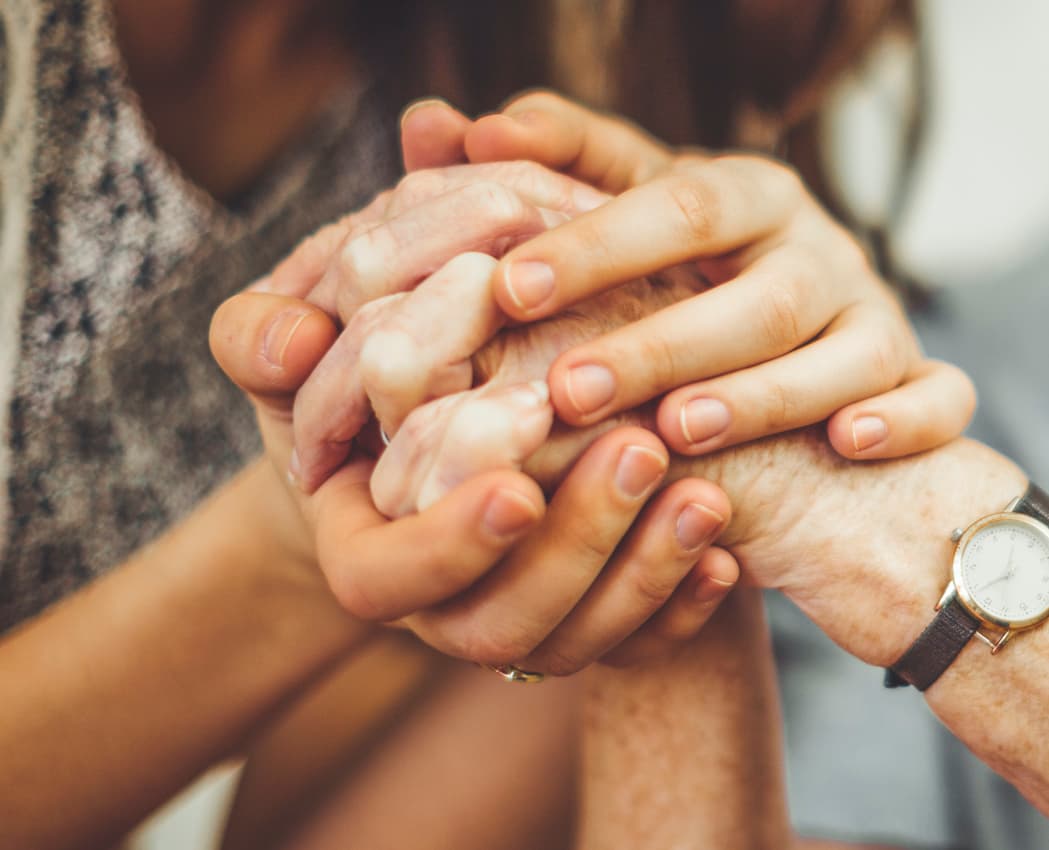Planning a funeral after the death of a loved one is one of the most challenging things we might do in life. It can be emotionally draining to work through the details of funeral arrangements, costs, and paperwork in the weeks after a death. In addition, if you weren’t able to discuss end-of-life wishes with your loved one, it may be even more difficult to plan their funeral. However, with some guidance and information, you can tackle planning a funeral with as little stress as possible.
Our checklist below can be a helpful resource for planning a funeral. It has been broken down into sections to help you know what to do before death, before the funeral, and for planning the funeral.
Only some items on the list will be relevant to your situation. Go through each section of the checklist to get an idea of what is involved in each step of the process, then print out our simplified one-page checklist.
Before Death Occurs
These are a few steps to take that can help you avoid having to make a bunch of decisions after a loved one has passed. If you can’t follow all of these steps or even any of them, that’s OK too! All of these tasks can be completed after death as well.
Gather advance directive documents and any living will and put them in an easily accessible place.
Gather important documents like insurance policies, marriage certificates, birth certificates, social security information, armed forces discharge papers, deeds, and vehicle titles. Having these items organized before death occurs can significantly reduce stress during a time when you are grieving.
Think about how you will pay for the funeral and other associated costs and make necessary financial arrangements.
Find out if your loved one may be eligible for burial benefits or other funeral services, like veterans benefits.
Decide on burial, cremation, or alternatives, like a mausoleum, eco-friendly burial options, aquamation, or memorial jewelry created with cremated remains.
Decide on a funeral home.
Make arrangements for the continued care of your loved one’s pets.
Before the Funeral
Before you do anything, remember to take your time. You don’t have to feel rushed to make decisions after your loved one has passed. Many people take hours after a loved one’s death to perform religious or cultural rituals and process their emotions with friends and family during this difficult time. When you are ready to begin the next steps, have this checklist or our simplified checklist handy to give you an easy guide to follow.
Get the death certificate, also known as the legal pronouncement of death, plus multiple copies. This can be obtained from the doctor or hospice nurse who oversaw the death. You have several options if the death occurred at home and was not overseen by a doctor or nurse. Call 911, a doctor, a funeral home, or call the local coroner. It is recommended that you get 10-20 copies of the death certificate, as many institutions will require proof of death to close accounts or pay out benefits.
Arrange for the body to be transported. If an autopsy is required, the coroner can transport the body. If no autopsy is required, then the body can be transported by a funeral home.
Inform others of your loved one’s passing. This could include calling family, friends, your loved one’s employer, and any other communities or organizations that played a large role in the deceased’s life.
Discuss the preparation of the body with the funeral director. This includes deciding on embalming, clothing, and other aesthetic options for the body.
Gather information for the obituary. You can write your loved one’s obituary yourself, have a family member or friend write it, or have the funeral director write it. Don’t put a lot of pressure on yourself if you aren’t sure what to write. The funeral director will be able to walk you through what information they need. You can even find obituary templates like this one to help get you started. If your loved one is open to it, you may want to have a conversation with them about what kinds of things they would like in their obituary after they pass.
Choose a casket or cremation urn.
If the body or remains are being buried, choose a headstone or grave marker and decide what words should be inscribed.
Choose a grave plot or other location as the final resting place for your loved one.
Get a burial permit if needed.
Planning the Funeral
If you are working with a funeral home, the funeral director will be a great resource for helping you plan. They can be involved in planning as much or as little as you want.
Decide on the type of service. (traditional service, graveside service, wake, visitation or viewing, religious service, a celebration of life, etc.)
Choose a location, date, and time for the service.
Invite guests to the funeral. This can be done in many different ways. For example, you may want to call people or have friends or family members help you make calls. You can also send electronic or mail invites if you have more time before the service.
Submit the obituary and service details to local newspapers.
Choose an officiant to lead the service.
Choose other key people to be involved in the service - pallbearers, performers, speakers, etc.
Contact a florist and select flower arrangements.
Select photos you want to be displayed at the service.
Select music to be played or performed at the service.
Select readings for the service, like poems, scripture, passages, etc. Identify who will read them.
Prepare other items or visual displays to be used at the service. This could include videos or memorabilia from your loved one’s life.
Purchase a funeral guest book if you’d like guests to sign in and share respects.
Create programs for the service. You can find templates online to help you get started.
Arrange food and beverages for before or after the service.
Estimating the Cost of a Funeral
The average cost of a funeral is around $9,000. This can be a heavy financial burden for many people. However, pre-planning or research before the funeral can help control costs.
First, know that the Federal Trade Commission requires by law that funeral homes provide consumers with a General Price List. This list is a detailed, itemized statement of all the prices for the goods and services they provide. You are entitled by law to select only the goods and services you want.
Here are some of the most common categories of goods and services that a funeral home will offer:
Basic Service Fee
This is a fee that all funeral homes charge that covers essential services like funeral planning, obtaining necessary permits and death certificates, storing remains, and coordinating with the cemetery, crematory, or other relevant parties.
Optional Goods and Services
These are costs for all other goods and services beyond what the basic service fee covers. Common optional services include transport of the remains, use of the funeral home for service or viewing, embalming, use of equipment for burial, and a casket or urn.
Cash Advances
Cash advances are paid to the funeral home for goods and services it provides from outside vendors. This can include flowers, officiants, musicians, caterers, obituary notices, and funeral programs. The law also requires funeral providers to disclose if they receive vendor discounts or refunds.
Visit the FTC Funeral Rule website to research funeral homes and pricing and learn more about your rights as a consumer.
Download and print the simple one-page checklist for planning a funeral. [PDF is available here]

